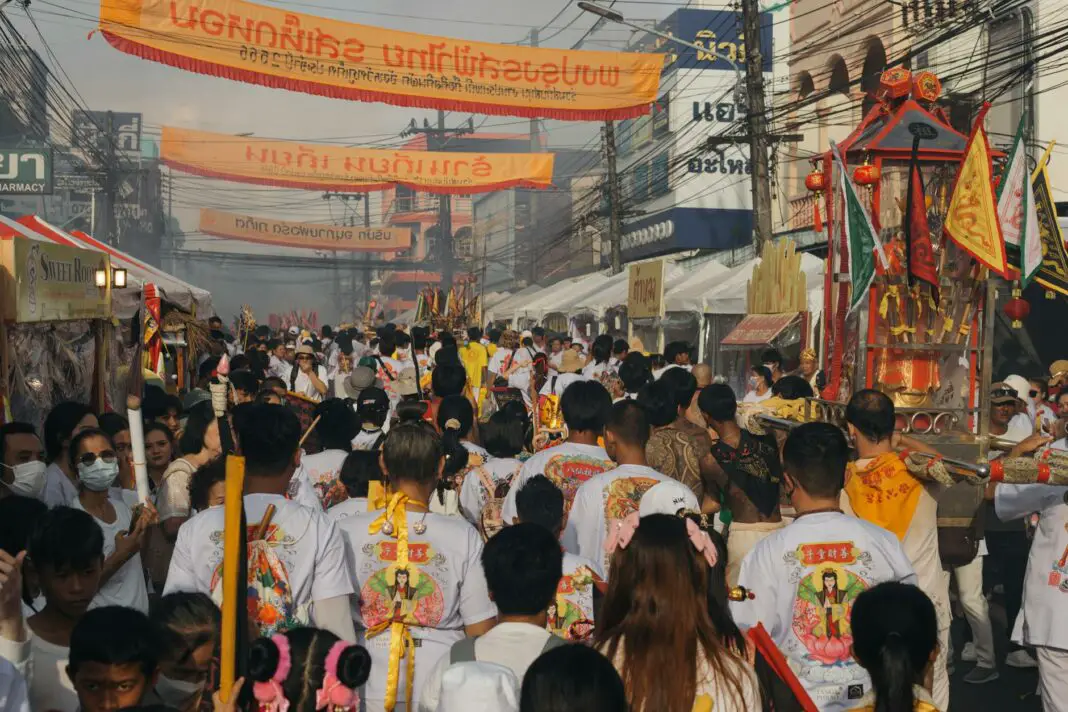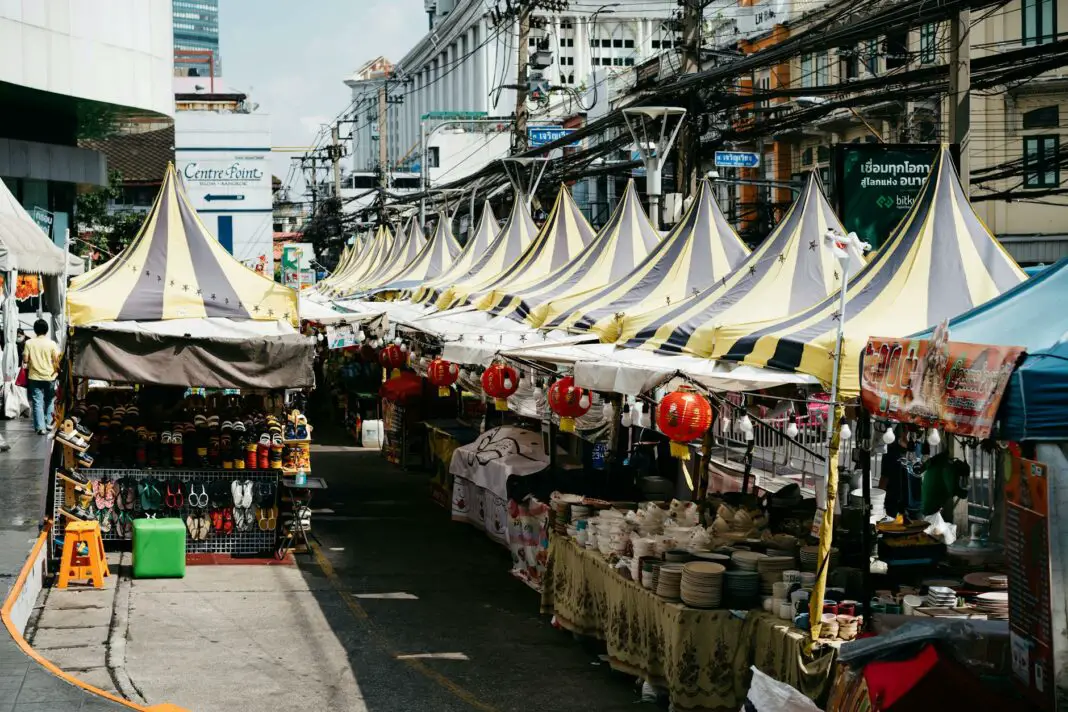Embarking on a trip to Thailand unveils a world of vibrant culture and breathtaking beauty, deeply entwined with its traditional art forms, specifically through the mesmerizing Thai dance. This blog post dives into a fascinating aspect: What secrets do Thai dance costumes reveal about the culture? From regal attire to intricate adornments, each costume holds its narratives, echoing the stories of the kingdom’s history, beliefs, and customs. As you traverse through the colorful landscape of Thai dance, discover the profound symbolism embedded in every stitch, bead, and silk, reflecting not merely the aesthetics but deep cultural values. Join us on this incredible journey, peeling back the layers of these beautiful costumes to unveil the rich heritage of Thailand.
As you read this post, get ready for a comprehensive exploration. Not only will we touch on the history of these dance costumes, but we will also decipher their colors, materials, and the unique stories each piece tells. This exploration will help travelers and culture enthusiasts alike appreciate the cultural significance of Thai dance. So, fasten your seatbelts and prepare to delve into an enchanting realm of tradition, artistry, and stories woven with elegance.
Table of Contents
- Introduction to Thai Dance and Costumes
- Historical Context of Thai Dance Costumes
- Symbols, Colors, and Their Meanings
- Materials and Craftsmanship in Thai Dance Costumes
- Cultural Significance of Thai Dance Costumes
- Experiential Insights and Travel Tips
- Celebrations and Festivals Featuring Thai Dance
- Inspiring Takeaway from Thai Dance Culture
- Frequently Asked Questions
Introduction to Thai Dance and Costumes
Thai dance, a wondrous blend of creativity, rhythm, and storytelling, plays a significant role in the country’s cultural identity. This performance art not only entertains but also preserves the country’s ancient tales, historical events, and spiritual beliefs. Dressed in flamboyant costumes, dancers embody characters from history and mythology, captivating audiences with each graceful gesture and fluid movement. These costumes are far more than simple outfits; they are visual narratives that intertwine with Thailand’s deep-seated traditions, revealing rich cultural legacies.
The integration of color, form, and intricacy makes Thai dance costumes one of the most captivating aspects of this art form. Observing a performance is akin to stepping into a vivid tapestry, one that showcases the country’s history along with its spiritual aspects. Every detail, from the headdress to the elaborate jewelry, contributes to a story that transcends verbal communication, offering an immersive cultural experience. Understanding these costumes enriches your journey through Thailand, transforming mere observation into deep appreciation. Let’s dive into the history and secrets that these costumes hold.
Historical Context of Thai Dance Costumes
Diving into the historical context of Thai dance costumes reveals a fascinating evolution that has paralleled Thailand’s own history. These costumes trace back to the Ayutthaya Kingdom, rooted in a long-standing tradition of reverence for art and performance. Over centuries of sociopolitical changes, including the influences of neighboring cultures, these costumes have evolved dramatically, reflecting significant transitions in Thai history. During royal ceremonies, specific styles emerged to denote prestige and status, where only the elite could don certain embellishments and colors, culminating in a visual representation of hierarchy within society.
As Thailand transitioned through different eras, so did its costumes. The Rattanakosin period introduced new designs that incorporated elements from Western fashion, further enriching the visual language of the dance. Dancers began integrating unique embroidered patterns and intricate beadwork, which captured the audience’s imagination while also serving as symbols of morality, spirituality, and beauty in Thai culture. Each era’s footprint remains visible, offering insight into how societal values and alliances influenced the aesthetics of dance costumes. The profound dialogues between past and present danced gracefully across time, inviting historians and travelers alike to explore the context of these elaborate costumes.
Symbols, Colors, and Their Meanings
In Thai culture, colors are imbued with profound meanings and significance, particularly in the realm of dance. Thai dance costumes often showcase rich palettes, and each hue serves as a reflection of specific cultural beliefs and societal norms. For instance, the color gold is synonymous with prosperity and divine presence, frequently featured in royal performances and celebratory dances. Red symbolizes vibrancy and intensity, often signifying both love and courage. In contrast, blue conveys tranquility, allowing dancers to portray subservient or gentle characters, creating a multi-layered portrayal that holds the audience’s attention.
Moreover, elaborate symbols embedded in the fabric and designs tell stories that often relate to Buddhism and local folklore. For example, motifs such as lotus flowers signify purity and enlightenment, while dragon patterns symbolize power and strength. These symbols transcend their decorative functions; they narrate compelling stories that engage the audience’s imagination while imparting wisdom. Understanding these elements not only enriches one’s viewing experience but also deepens appreciation for the cultural narratives inherent in each performance. Engaging with the color and symbolism of these costumes transforms a casual observer into a curious learner, eager to decode the layers of meaning hidden in this stunning art form.
Materials and Craftsmanship in Thai Dance Costumes
The craftsmanship behind Thai dance costumes is emblematic of Thailand’s rich artistic traditions. The selection of materials used in making these costumes reflects their cultural significance and the environmental resources available in Thailand. Traditional costumes often utilize silk, known for its luxurious texture and sheen. The production of Thai silk dates back centuries, linking artisans to their heritage as they weave intricate patterns and designs that enhance the performance. This silk not only elevates the aesthetic appeal of costumes but also embodies the warmth of Thai hospitality and cultural pride.
Moreover, the beaded jewelry and embellishments incorporated into Thai dance costumes add layers of visual storytelling. These items are crafted with meticulous precision, often taking weeks or months to create. The incorporation of local gemstones, such as sapphires and rubies, signifies wealth and blessings, capturing the essence of cultural artistry through every detail. The effort put into crafting each piece demonstrates a dedication to preserving cultural identity while enhancing the richness of the performance itself. As you observe dancers gracefully adorned in these costumes, you become aware of the substantial labor and love that embodies each creation, uniting artistry and cultural significance to transport audiences to a realm of wonder.
Cultural Significance of Thai Dance Costumes
The cultural significance of Thai dance costumes extends far beyond their visual splendor. They act as conduits for storytelling, carrying the weight of generations of traditions and narratives that define the Thai identity. Traditional performances are often rooted in religious and moral lessons that echo the teachings of Buddhism, allowing the costumes to serve as a vibrant canvas for moral exploration. For instance, the way a dancer dons their costume can symbolize readiness to perform their role with pride and dedication, embodying the values of respect and humility, vital tenets within Thai culture.
Additionally, these costumes play a crucial role during important festivals and ceremonies, where they are worn to honor ancestors, express communal values, and showcase unity within cultural differences. When locals gather to celebrate through dance, adorned in their traditional costumes, a powerful sense of belonging fills the air, showcasing the vibrant tapestry of Thailand’s cultural heritage. The resonance of the costumes amplifies when they come alive in performance, bridging generations and nourishing the roots of cultural identity. Ultimately, understanding the cultural significance of these costumes transforms the experience of witnessing Thai dance from a mere visual spectacle to a meaningful communion rich with depth and resonance.
Experiential Insights and Travel Tips
When planning a trip to Thailand centered around its captivating dance culture, consider timing your journey to coincide with local festivals. Events such as the Songkran Festival or Loy Krathong boast spectacular dance performances that beautifully showcase traditional costumes. Attending such festivals allows you not only to witness the art form firsthand but also to immerse yourself in the festive spirit and community involvement surrounding these cultural displays. Make it a point to visit temples and cultural centers, such as the Erawan Museum or the Thailand Cultural Centre, where you can view various performances while gaining insight into the intricate details of the costumes and their significance.
Venturing beyond the mainstream tourist attractions can lead to discovering hidden gems featuring local dance troupes, even participating in workshops that allow you to experience a piece of the rich cultural heritage. Consider engaging with local artisans who craft these exquisite costumes to see their dedication firsthand. Learning about the process, from concept to creation, will provide invaluable context to the clothing adorned in performances. As you dive into local customs and crafts, remember to be respectful and open-minded, embracing the warmth and hospitality that Thailand is known for, ensuring your journey is both enriching and memorable.
Celebrations and Festivals Featuring Thai Dance
Festivals in Thailand provide thrilling platforms for traditional dance performances, often adorning vibrant costumes that capture the essence of the occasion. For instance, the Royal Ploughing Ceremony, held annually, showcases splendid performances that highlight ancient agricultural practices through dance, while the dancers grace the fields in beautifully embroidered costumes that symbolize fertility and prosperity. Such celebrations weave together the threads of agriculture, spirituality, and cultural identity, allowing observers to appreciate the integral role of dance in Thai celebrations.
Moreover, the vibrant dance performances during the Thai New Year, or Songkran, are a delightful treat for visitors. This festival celebrates the water-splashing tradition as an offering to purify and cleanse. Revelers don traditional outfits, often made from colorful fabrics embellished with intricate designs, enhancing the festive atmosphere. As performances fill the streets, community spirit becomes palpable, with laughter and joy resonating among locals and travelers alike. Festivals like these allow you to witness culture in its most authentic form, where costumes not only enhance the visual experience but also symbolize shared values and heritage that resonate deep within the hearts of the people.
Inspiring Takeaway from Thai Dance Culture
In exploring the world of Thai dance and its splendid costumes, an inspiring realization emerges: each costume acts as a narrative tool, bridging the past and present while celebrating cultural identity. Every performance, rich in detail and artistry, invites audiences of all backgrounds to engage in the intricate tapestry of Thai history woven through movement, color, and pattern. By participating in this cultural exploration, you nourish your appreciation for the nuances of tradition and the artistry involved in presenting them.
In essence, the beauty of Thai dance costumes lies in their ability to evoke emotions, connect individuals, and celebrate values that define the Thai community. Reflect upon these insights and allow them to accompany you as you continue your travels, encouraging you always to seek deeper meanings beyond the surface. Infusing your journey with a sense of curiosity and exploration transforms each cultural encounter into a story worth telling, creating connections that last a lifetime.
Frequently Asked Questions
- What materials are commonly used in Thai dance costumes? Thai dance costumes are primarily made from luxurious silk, adorned with intricate beads, embroidery, and sometimes local gemstones to enhance their cultural significance.
- Are there specific colors associated with Thai dance costumes? Yes, each color carries specific meanings. Gold represents prosperity, red symbolizes love, and blue conveys tranquility, among other associations tied to the cultural context.
- How can I experience Thai dance culture during my visit? To immerse yourself in Thai dance culture, attend local festivals, visit cultural centers, and engage with workshops led by local artisans to deepen your understanding and experience.
- What role do costumes play in Thai dance performances? Costumes in Thai dance serve as visual narratives that embody the characters, traditions, and cultural values, enriching the storytelling aspect of the performances.
- How does Thai dance reflect the country’s cultural heritage? Thai dance, alongside its costumes, encapsulates historical narratives, moral teachings, and communal values, weaving together a vibrant tapestry of Thailand’s cultural heritage.
Image Credit: Pexels





